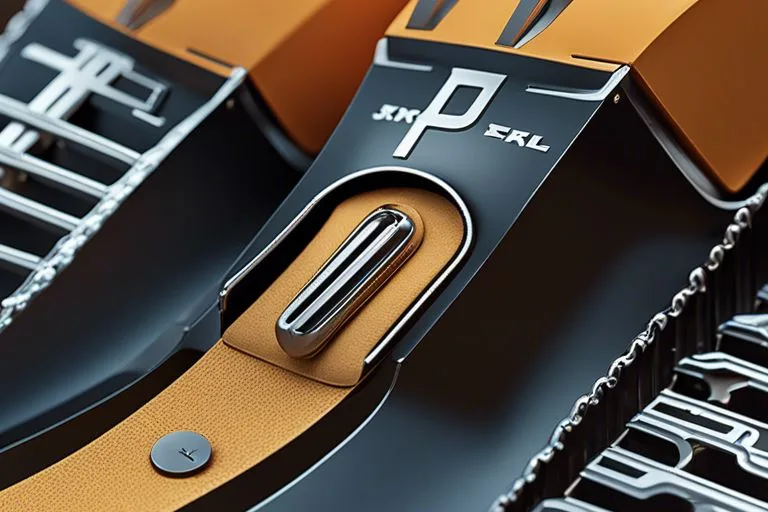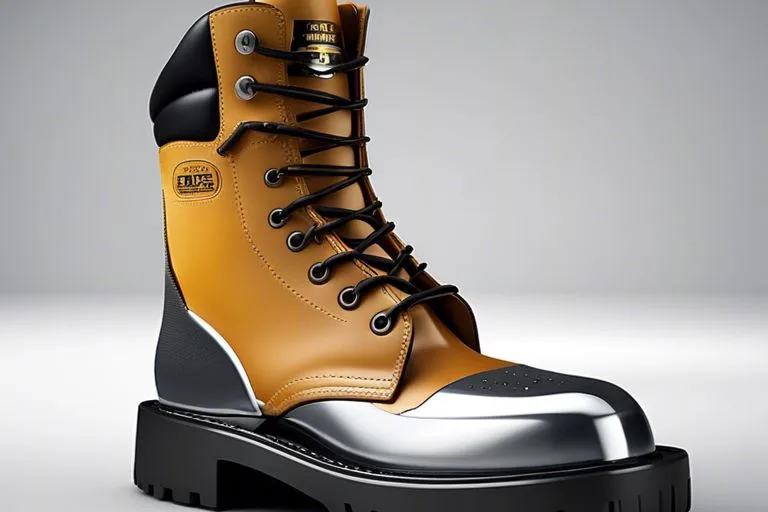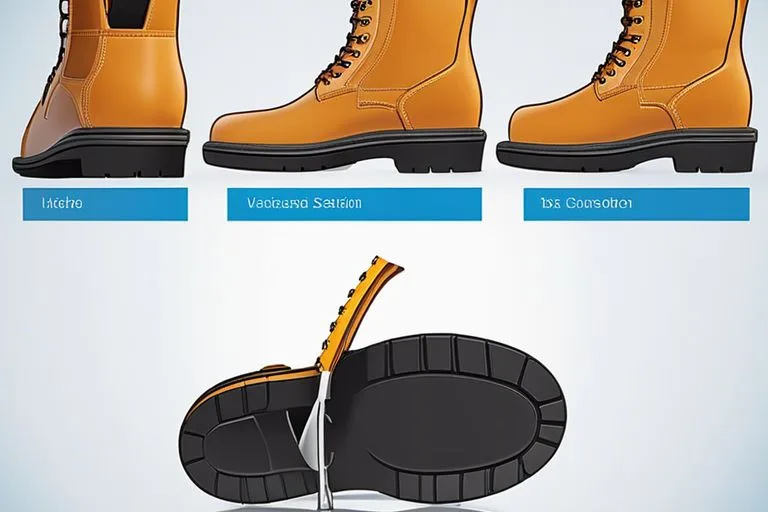Have you ever wondered what exactly a steel shank is in your work boots and why it’s so important? Well, you’re in the right place. A steel shank is a crucial component of many work boots, providing essential support and protection for your feet throughout the day. This small piece of metal is located between the insole and outsole of the boot, and it plays a vital role in keeping your feet comfortable and safe in hazardous work environments.
The steel shank is designed to provide stability and support for your arches, helping to reduce fatigue and prevent foot pain during long hours on your feet. Additionally, this sturdy piece of metal also offers protection from punctures and impacts, shielding your feet from potential hazards such as sharp objects or heavy falling debris. Without a steel shank, your work boots would lack the necessary structural support and safety features needed to keep your feet secure and comfortable on the job.
Key Takeaways:
- Support and Stability: A steel shank in work boots provides essential support and stability to the arch of the foot, helping to minimize fatigue and discomfort during long hours on the job.
- Protection from Puncture Hazards: The steel shank serves as a protective barrier against potential puncture hazards, such as nails or sharp objects, helping to keep the foot safe from injury in hazardous work environments.
- Durability and Longevity: Work boots with a steel shank are known for their durability and longevity, as the reinforced structure helps to maintain the shape and integrity of the footwear over time, making them an ideal choice for demanding work conditions.
Steel Shanks Defined
Obviously, you’ve come across the term ‘steel shank’ when shopping for work boots, but what exactly does it mean? Well, a steel shank is a crucial component of a work boot that provides essential support and protection for your feet. If you want to dive deeper into the topic and learn more about the role of steel shanks in work boots, you can read this article on What is a Steel Shank in a Work Boot? Are There Better …
The Anatomy of a Work Boot
When it comes to work boots, understanding their construction is important for choosing the right pair. The anatomy of a work boot includes various components such as the upper, the outsole, the midsole, and the insole. These parts work together to provide you with comfort, protection, and durability throughout your workday. The steel shank, in particular, is integrated into the midsole to provide structural support and stability, enhancing the overall performance of the boot.
What is a Steel Shank?
At the core of a work boot’s design is the steel shank, a thin, strip of steel that is positioned between the insole and outsole. Its primary function is to support the arch of your foot and provide torsional rigidity to the boot. This feature makes it incredibly important for reducing foot fatigue and preventing injuries, especially when you’re on your feet for long hours. The steel shank also protects your feet from punctures and impacts, acting as a barrier between your soles and the ground.
History of Steel Shanks in Footwear
While the use of steel shanks in footwear may seem like a modern innovation, the truth is that this feature has a long history that dates back to the 19th century. Steel shanks were originally introduced to provide additional support and stability to work boots, especially for those who spent long hours on their feet in demanding environments. Over the years, the design and functionality of steel shanks have evolved to meet the changing needs of workers in various industries.
Origins of the Steel Shank
The origins of the steel shank can be traced back to the industrial revolution when workers faced the challenge of standing and walking on hard, uneven surfaces for extended periods. Without proper support, their feet would often suffer from fatigue, pain, and even long-term injuries. This led to the development of the steel shank, which provided a rigid structure in the midsole of the boot to support the arch of the foot and distribute the pressure more evenly. This innovation significantly improved the comfort and safety of workers who relied on sturdy footwear for their daily tasks.
Evolution in Work Boot Design
As technology and research advanced, so did the design and construction of work boots. The incorporation of steel shanks in footwear evolved to not only provide support and stability but also to offer protection against puncture wounds and other serious foot injuries. Modern work boots with steel shanks are designed to meet industry-specific standards and regulations, ensuring that you have a reliable and durable pair of boots that can withstand the demands of your work environment. The positive impact of this evolution is undeniable, as it has contributed to the overall safety and well-being of workers across various professions.

The Function of Steel Shanks in Work Boots
Keep in mind that the shank of a work boot is an essential component that contributes to the overall support, stability, and protection of your feet. The shank is a flat, supportive piece of material, often made from steel, that is positioned between the insole and outsole of the boot. The presence of a steel shank in your work boot can significantly impact your comfort and safety throughout the day. To learn more about the shank of a boot, you can also visit What is the shank of a boot?.
Support and Stability
When it comes to support and stability, the steel shank in your work boots plays a crucial role. It provides a rigid structure that helps distribute your weight evenly across the entire foot, reducing fatigue and discomfort. By preventing your foot from overly flexing, the steel shank also helps maintain proper foot alignment, which is essential for preventing injuries and maintaining long-term foot health. Additionally, the shank contributes to overall balance, especially when navigating uneven or challenging terrain, giving you the confidence to tackle any task with ease.
Protection Benefits
The presence of a steel shank in your work boots also offers significant protection benefits. It acts as a barrier between the outsole and insole, shielding your feet from puncture hazards such as nails, glass, or sharp objects on the ground. In hazardous work environments, this extra layer of protection could make all the difference in preventing serious foot injuries. Whether you’re working on a construction site, in a warehouse, or any other industrial setting, the steel shank in your work boots provides peace of mind that your feet are well-protected against potential hazards.
Durability Enhancement
Finally, the inclusion of a steel shank in your work boots enhances their overall durability. The rigid support and structure provided by the shank help prevent the boots from breaking down prematurely, even when subjected to heavy use and rugged conditions. This means your work boots will maintain their supportive qualities and protective features for longer, ensuring that you get the most value out of your investment. With a steel shank in your work boots, you can trust that they will withstand the demands of your job and continue to provide reliable performance day after day.
The Importance of Steel Shanks for Various Professions
Despite the varying demands of different professions, one common requirement is the need for sturdy and reliable footwear. Steel shanks play a crucial role in providing the necessary support and protection for a range of professions, ensuring your safety and comfort throughout the workday.
Construction Workers
For construction workers, on-the-job hazards are a daily reality. Whether you’re navigating uneven terrain, standing on ladders, or working around heavy machinery, the risk of foot injury is always present. Steel shanks provide essential arch support and stability, reducing the risk of foot fatigue and stress injuries. Additionally, in the event of accidental impacts or compression from heavy objects, the steel shank acts as a barrier that shields your feet from potential harm, preventing serious injuries that could sideline you from work.
Industrial Workers
In industrial settings, the potential for workplace accidents is a constant concern. From slipping on wet surfaces to navigating slippery chemicals or heavy equipment, your work boots need to provide the utmost protection. Steel shanks offer unyielding support for your feet, minimizing the risk of injuries caused by underfoot pressure or punctures. This added stability and protection are invaluable when you’re faced with the daily demands of your job, ensuring that your feet remain secure and shielded from potential hazards.
Military and Law Enforcement
As a member of the military or law enforcement, you are often required to traverse varied terrain and be prepared for unpredictable circumstances. Steel shanks in your work boots provide essential reinforcement as you navigate rugged landscapes, climb over obstacles, and stand for long hours. They protect your feet from potential hazards such as sharp objects, while also offering stability and support during physically demanding tasks. Whether you’re on duty or in training, the presence of steel shanks ensures that your feet remain well-protected, allowing you to focus on the task at hand with confidence.
Comparing Steel Shanks to Other Shank Materials
For work boots, the choice of shank material is crucial for providing support and protection to your feet. When comparing steel shanks to other shank materials, it’s important to understand the differences in terms of strength, durability, and flexibility. Here is a breakdown of steel shanks compared to other common materials:
Steel vs. Composite Materials
Composite shanks are often made from a combination of materials such as fiberglass, Kevlar, and carbon fiber. They are lightweight and offer good flexibility, making them a popular choice for athletic and casual footwear. However, when it comes to work boots, steel shanks provide superior strength and stability. Steel is known for its outstanding durability and ability to withstand heavy loads and harsh conditions. Additionally, steel shanks offer maximum protection against punctures and impacts, making them ideal for hazardous work environments.
Steel vs. Thermoplastic Polyurethane (TPU) Shanks
Thermoplastic Polyurethane (TPU) shanks are known for their excellent flexibility and shock absorption properties. They are lightweight and offer good support for everyday activities. However, when it comes to work boots, steel shanks outperform TPU shanks in terms of sheer strength and rigidity. This is especially important when you are working in rugged terrains or handling heavy equipment. Steel shanks provide the necessary stability and protection to keep your feet safe and comfortable throughout the workday.
How to Identify a Quality Steel Shank in Work Boots
Unlike other components of work boots, the steel shank is not always visible and can be difficult to identify. However, there are key features you can look for to ensure that your work boots have a quality steel shank.
Key Features to Look For
When looking for a quality steel shank in work boots, there are several key features you should pay attention to. Firstly, thickness is important. A quality steel shank should be thick enough to provide adequate support and protection for your feet. Additionally, the material of the steel shank is crucial. Look for work boots that have a shank made from high-grade steel to ensure durability and strength. Another important feature to consider is the placement of the steel shank. It should extend from the heel to the ball of the foot, providing full support to the arch. Furthermore, the flexibility of the steel shank should be balanced – it should be rigid enough to provide support, but not so rigid that it becomes uncomfortable to wear for long periods of time. Any work boot with these features is likely to have a quality steel shank.
Common Misconceptions and Myths
There are some common misconceptions and myths surrounding the steel shank in work boots. One of the most dangerous misconceptions is that all steel shanks are the same, regardless of the work boot brand or price. This is simply not true. Quality work boots will have a steel shank that meets certain standards and specifications, while cheaper, lower-quality boots may have a substandard shank that does not provide adequate support. Another myth is that steel shanks are uncomfortable to wear. While it’s true that some poorly-designed work boots may be uncomfortable, a quality steel shank should be flexible and supportive, providing comfort and protection for your feet.
Remember, when it comes to work boots, the steel shank is a crucial component that directly impacts your safety and comfort. By understanding the key features to look for and being aware of common misconceptions, you can make an informed decision when choosing work boots that have a quality steel shank. Your feet will thank you for it.
Care and Maintenance of Steel Shank Work Boots
Not only are steel shank work boots an investment in your safety and comfort, but they also require proper care and maintenance to ensure their longevity and effectiveness. By following the best practices for maintenance and knowing when to replace your work boots, you can get the most out of your investment.
Best Practices for Longevity
When it comes to caring for your steel shank work boots, there are a few key practices that can help extend their lifespan. First and foremost, regularly clean your boots to remove dirt, mud, and other debris that can cause premature wear and tear. Use a soft brush to gently scrub the exterior of the boots, and if needed, use a mild detergent to remove stubborn stains. Allow your boots to air dry thoroughly before wearing them again.
Additionally, it’s important to regularly inspect your boots for any signs of damage. Look for loose stitches, cracked leather, or worn-out soles. Addressing these issues early on can prevent further damage and prolong the life of your boots. Lastly, consider applying a waterproofing treatment to your boots to protect them from moisture and prolong their lifespan.
When to Replace Work Boots with Steel Shanks
Despite your best efforts to care for your steel shank work boots, there will come a time when they need to be replaced. Knowing when to replace your boots is crucial for maintaining your safety and comfort. One of the most important indicators that it’s time for a new pair of work boots is when the steel shank becomes damaged or starts to protrude through the sole. A compromised shank can affect the stability and support provided by the boots, putting you at risk of injury.
Additionally, if you notice that the soles of your boots are worn down to the point where they are no longer providing adequate traction, it’s time to start shopping for a new pair. The same goes for any significant damage to the leather or other materials used in the construction of the boots. Remember that your safety is at stake, so don’t hesitate to replace your work boots when they no longer provide the protection and support you need.
 1. Provides arch support.
1. Provides arch support.
2. Protects feet from punctures.
3. Increases stability and support.
4. Adds durability to the boot.
5. Common in heavy-duty work boots.
6. Supports the overall structure of the boot.
Conclusion: What is a Steel Shank in Work Boots
On the whole, understanding the function of a steel shank in work boots is essential for anyone who works in physically demanding environments. The steel shank provides support to the arch of your foot and helps to distribute the weight and pressure evenly across the foot, reducing fatigue and discomfort during long hours on your feet. Additionally, the steel shank protects your feet from potential punctures and injuries by providing a barrier between the ground and the sole of your foot. Choosing work boots with a steel shank is an important investment in your comfort, safety, and overall well-being while working in challenging conditions.
When selecting work boots, you should prioritize comfort and protection, and the presence of a steel shank is a key factor to consider. With a better understanding of the purpose and benefits of a steel shank in work boots, you can make informed decisions when purchasing footwear that will support you throughout your workday and beyond.
FAQ
Q: What is a steel shank in work boots?
A: A steel shank is a supportive structure in the midsole of a work boot that provides stability and protection for the foot. It is a piece of steel or other sturdy material that is inserted between the insole and outsole of the boot.
Q: What is the purpose of a steel shank in work boots?
A: The primary purpose of a steel shank in work boots is to provide arch support and prevent the boot from flexing too much. This helps to reduce foot fatigue and provides a solid platform for the wearer to stand and walk on.
Q: How does a steel shank benefit the wearer?
A: A steel shank in work boots helps to distribute the weight of the wearer evenly across the foot, reducing strain and fatigue. It also protects the foot from sharp objects, such as nails or rocks, that may penetrate the sole of the boot.
Q: Are there any downsides to having a steel shank in work boots?
A: While steel shanks provide excellent support and protection, they can also add weight and stiffness to the boot. Some wearers may find them uncomfortable, especially if they are not used to wearing shoes with shanks.
Q: Are there alternatives to steel shanks in work boots?
A: Yes, some work boots use non-metallic shanks, such as fiberglass or composite materials, to provide support and protection. These materials are lighter and may be more comfortable for some wearers, while still offering the benefits of a traditional steel shank.

